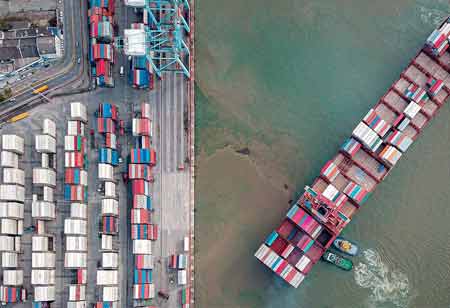THANK YOU FOR SUBSCRIBING
THANK YOU FOR SUBSCRIBING

By
Logistics Transportation Review | Monday, September 16, 2024
Stay ahead of the industry with exclusive feature stories on the top companies, expert insights and the latest news delivered straight to your inbox. Subscribe today.
AI improves operational efficiency, predicts demand, streamlines logistics, and enhances decision-making. Integrating AI into supply chain management boosts revenue, cost savings, and sustainability.
FREMONT, CA: AI-powered systems enable real-time decision-making that enhances operational excellence. These systems provide valuable insights by analyzing vast volumes of data from various sources, including transportation routes, customer demand patterns, and inventory levels. Using machine learning (ML) algorithms, they can accurately predict future demand, offering a transformative potential for supply chain management.
Streamlining logistics processes offers numerous benefits, such as increased productivity and cost efficiency. Businesses can better manage inventory levels, reducing the risk of stockouts or overstock situations. Predictive analytics further aids in identifying bottlenecks or disruptions within the supply chain, allowing for proactive measures to mitigate potential issues.
Automation plays a pivotal role in optimizing supply chain operations. Robotic process automation (RPA) and AI facilitate the automation of repetitive, time-consuming tasks, freeing human resources for more strategic initiatives. This, in turn, leads to improved operational reliability, enhanced productivity, and reduced errors.
The Role of AI In Improving Logistics and Operations
Generative AI leverages machine learning (ML) algorithms to create new, innovative outputs based on existing data. Its application in supply chain management is particularly promising, offering substantial improvements in logistics through several vital methods.
One notable area is predictive demand forecasting. AI can generate highly accurate demand predictions by analyzing data from multiple sources. These forecasts enable businesses to optimize inventory levels, minimize waste, and enhance customer satisfaction through better stock availability and reduced overproduction.
AI also plays a critical role in improving delivery and routing efficiency. It optimizes transportation routes by accounting for traffic conditions, fuel consumption, road quality, vehicle capacity, driver availability, and customer preferences. This data-driven approach reduces operational costs while ensuring timely deliveries and superior service quality.
In warehouse management, AI enhances efficiency by automating core processes like picking, packing, sorting, and storage. By using advanced technologies such as computer vision, robotics, sensors, and natural language processing, AI-driven systems improve productivity, reduce labor costs, and minimize errors in warehouse operations.
ML Applications in Enhancing Decision-Making
ML enhances logistics operations by optimizing resource allocation, managing risks, and facilitating problem-solving. It leverages data mining, simulation, scenario analysis, reinforcement learning, and adaptive learning to drive improved performance.
ML plays a pivotal role in customer service by responding to inquiries, tracking orders, providing feedback, and resolving issues. ML enhances customer engagement and satisfaction through chatbots, voice assistants, sentiment analysis, and data analytics. When integrated into supply chain management, ML offers three primary advantages: increased revenue, cost savings, and improved supply chain sustainability.
AI-powered systems transform supply chain management by offering real-time insights, predictive analytics, and automation capabilities. These technologies streamline logistics processes, enhance operational efficiency, and save costs. By leveraging AI, businesses can optimize inventory levels, reduce waste, improve customer satisfaction, and ensure timely deliveries. Integrating AI into supply chain management is a strategic necessity and a powerful tool for achieving sustainable growth and competitive advantage in today's business landscape.
I agree We use cookies on this website to enhance your user experience. By clicking any link on this page you are giving your consent for us to set cookies. More info





